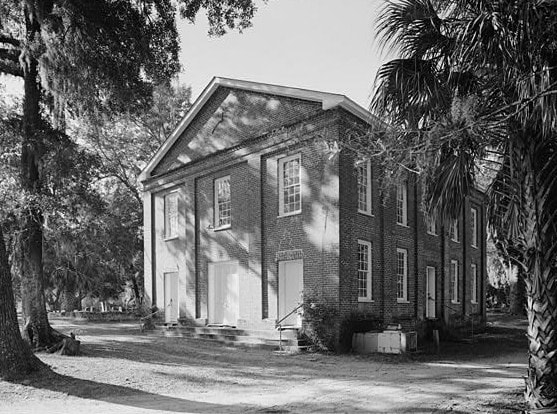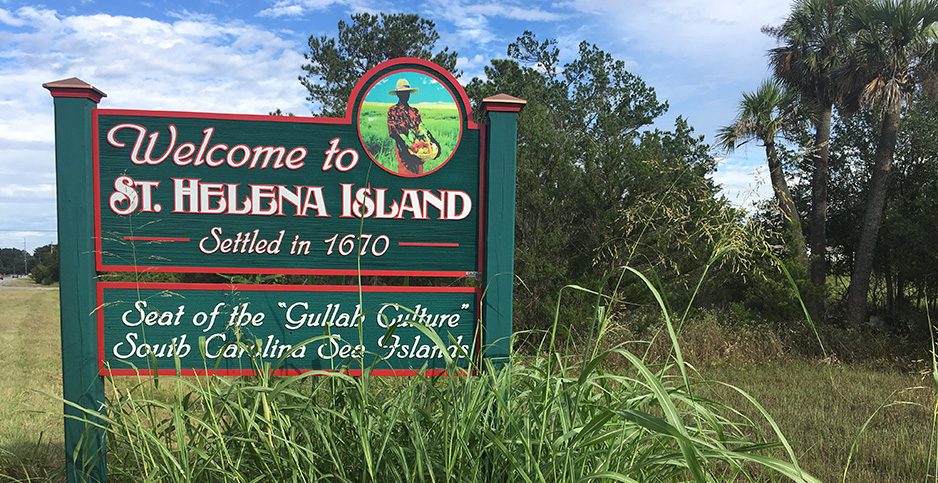When you think of the Low Country region in the United States, you readily envision the Sea Islands, areas along the southeastern coastlines of South Carolina, Georgia and Florida. These islands, of which there are more than one hundred, are located between the Santee River and the St. John’s River. They include the islands, Edisto, Fripp, Hilton Head, Daufuskie, Tybee, St. Simons, Jekyll and St. Helena.

On St. Helena Island, particularly, aspects of many beliefs, customs, traditions, skills and crafts, cuisine and languages of West Africans who were forced to labor in building America were retained beyond the era of slavery. These retentions significantly comprised the culture of the Gullah, Geechee and Sea Island peoples. Their cultures survived the brutal system of enslavement despite the challenging conditions: its location on the Atlantic Ocean provided suffocating heat and the proliferation of mosquitos, both common within waterways; lack of physical connections, such as bridges, to the mainland; and absence of forced assimilation to Eurocentric culture.
When you visit St. Helena, it’s difficult not to feel the special presence and influence of the Gullah, Geechee and Sea Island cultures. You may enjoy features such as a delicious meal of island pig and red rice over okra soup; a lively marktplace conversation, spoken in their historic distinctive patois; and a handcrafted seagrass basket, each designed by its creator in a unique weave pattern that has been passed down generation to generation. You may purchase a beautiful lithograph showcasing Sea Islander life by native Jonathan Green; visit an institution such as the Rice Museum or even hear an oral account of the Islands people, from the past to the present. Of all things to experience and appreciate about St. Helena, and many of the other Sea Islands, is the history of these amazing people.
St. Helena Island still bears the names of antebellum plantations, including Frogmoor, where the Penn School was founded in 1862. The Penn School was the first school for freed Blacks in the South. Its students varied in age, from children to adults, and in social status, parents and elders included. Those who attended the Penn School had a strong desire to learn to read and write in order to become educated. In a PBS NOW documentary on the Gullah culture, Emory Campbell, the director emeritus of the Penn Center, asserted that reading and writing were critical to the Gullah because it allowed them to sign their name to deeds of land. The Gullah felt land ownership was essential to their freedom.

The connection between land ownership and freedom for Blacks was of paramount importance. On January 16, 1865, General William T. Sherman of the Union Army issued Special Field Order No. 15, promising 40-acre sections of land to newly freed Black families. This order distributed 400,000 acres primarily of coastal land from Charleston, South Carolina to St. John’s, Florida to approximately 40,000 Blacks who had fled the Confederate states and also to those who had been enslaved but had been under the auspices of the Union Army stationed in the Sea Islands since 1861. The field order, approved by President Abraham Lincoln, came after the highly successful March to the Sea military campaign of Sherman and 60,000 Union Army troops from Atlanta, Georgia to Savannah and before his move north to South Carolina.
Previously, on January 12, 1865, General Sherman had met with U.S. Secretary of War Edwin Stanton and approximately twenty Black Baptist and African Methodist Episcopalian ministers to discuss emancipation and subsequent plans of possible actions. The settlement of Black families on the newly-acquired land served multiple purposes: it was a severe economic and political blow to the slavocracy of the Confederacy; it provided settlement for the Blacks who had been following Sherman since his invasion of Georgia in the March to the Sea campaign. It also encouraged Blacks who were free to fight for the Union Army to protect their recently-acquired freedom; and created the position of “Inspector of Settlements” to protect the land and ensure the legal titles of property ownership of the Black settlers. Sherman also authorized the loan of mules to the Black settlers in order to cultivate the land. On March 3, 1865, the Bureau of Refugees, Freedmen and Abandoned Lands, known as The Freedmen’s Bureau, was created to authorize legal titles of forty-acre plots of land to freed Blacks as well as White Unionists of the South.
On April 15, 1865, President Lincoln was assassinated. Later in that same year, the succeeding president, Andrew Johnson of Tennessee, took office. When the Civil War ended with the Union being victorious, Johnson, a strong supporter of the Confederacy, overturned Sherman’s order. Despite strong objections by General Oliver Howard, the chief of The Freedmen’s Bureau, Johnson confiscated most of the land along the coasts of South Carolina, Georgia and Florida from the Black settlers and gave it to the Southern landholders who supported the Confederacy. All these Southerners had to do was to take an oath of loyalty to be admitted back to the United States.
Ultimately, Blacks were able to make a life for themselves in the Sea Islands and by 1868, half of Beaufort County was owned by the Gullah. They believed in using the land for the benefit of the entire community and as such, never thought of themselves as individual owners of land. Because of this communal sharing, the Gullah culture was able to remain intact throughout the 19th and much of the 20th century. However, since the 1980s, outside developers and speculators have mounted sometimes controversial campaigns to acquire the valuable land of the indigenous Sea Islanders in order to gain enormous profits.

As many of the Gullah and Geechee rarely leave behind a will specifically deeding land to a certain heir(s) upon their passing, all of the deceased’s heirs own the estate together; this is collectively known as “heirs’ property”. Presently, the concept of heirs’ property is causing issues, as some relatives, significantly those who have never lived on the land, immediately want to sell their shares. Compounding the struggles of those who live on the land and want to remain there, is a clause in heirs’ property. If just one person/collective of relatives sells the land, the speculator may sue the remaining family members in an attempt to force them to sell their own land. For many reasons, this seems unfair, but the primary one is that no person/collective may own it but they can sell it.
With the sale of the land, comes immense cultural loss. On much of the land that the Gullah and Geechee had farmed and hunted and the areas in which they fished have now become gated communities, luxury condominiums and gated communities for the wealthy. In the powerful 2016 VICE News documentary, “A Vanishing History: Gullah Geechee Nation”, the description details this tragic cultural “exchange” when it states, “Local landowners are struggling to hold on to their ancestral land as resort developers with deep pockets exploit obscure legal loopholes to force the property into court-mandated auctions. These tactics have successfully fueled a tourism boom that now attracts more than 2 million visitors a year. Gullah communities have all but disappeared, replaced by upscale resorts and opulent gated developments that new locals — golfers, tourists, and mostly White retirees — fondly call “plantations.” Faced with an epic case of déjà vu, the Gullah are scrambling for solutions as their livelihood and culture vanish, one waterfront mansion at a time.”

Activist, author and historian Marquetta Goodwine, also known as “Queen Quet”, speaks of this epidemic. In the documentary, she informs correspondent, Danny Gold, that her great-great grandfather, in 1862, bought the land on which he had been previously enslaved and that his family, including her, has legally owned it since then. She lives on that land still and there she grows cantaloupe, okra, watermelon and peanuts, the same crops that her ancestors grew. As she states, the Gullah, Geechee and Sea Islanders have been legal owners of the lands for generations and recently, corporations have come to create that which is antithetical to their cultures. The viewer can feel the urgency and determination of the Sea Isalnders to retain their mores, especially when Queen Quet speaks of the energy of the land being very real and how all humans have to learn how to respect that energy.
The issue is how can the rich culture of the Gullah, Geechee and Sea Islanders remain true to their heritage and avoid exploitation and extermination. Museums and cultural centers, such as the Penn Center, as well as community outreach including the Penn Heritage Days, are some of the ways that culture is being preserved. The founder of the Gullah/Geechee Sea Island Coalition, Queen Quet and her organization actively seek to educate the international public about the unique traditions of the Gullah, Geechee and Sea Islanders as well as protect and promote their own cultural way of life.
